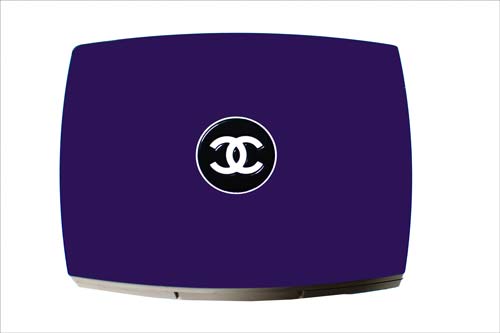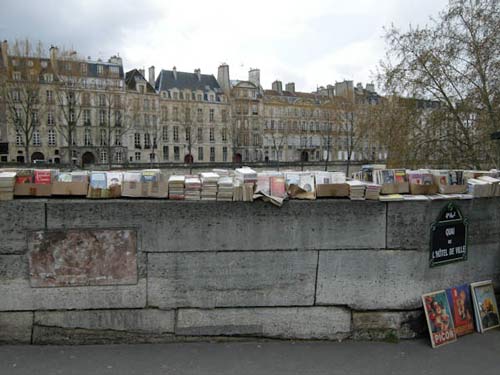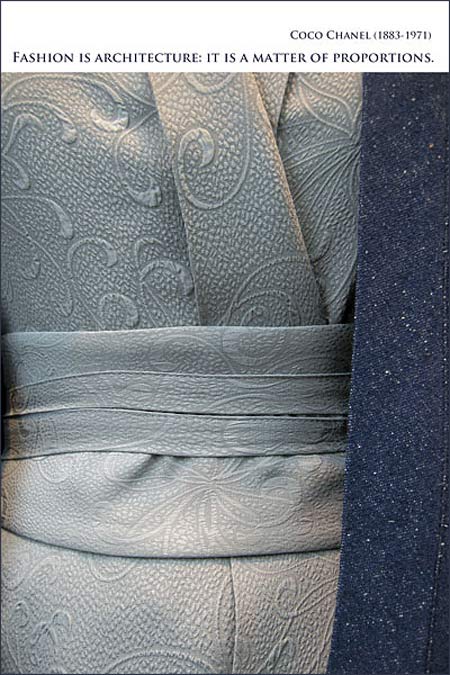
Towards Liberating Women from Corsets
At the end of the 19th century, it was customary for ‘properly’ dressed women to spend their days imprisoned in ornate dresses with padding and layers of underclothes including corsets which restricted movement and were very confining.
It was Gabrielle Bonheur Chanel who used her fashion genius of design and scissors to set women free by changing the reality of what was considered the only socially correct way that females should dress in polite Western society.
As she herself explained, “I gave women a sense of freedom, I gave them back their bodies: bodies that were drenched in sweat, due to fashion’s finery, lace, corsets, underclothes, [and] padding.”
The Path Less Traveled
How Chanel achieved that freedom for women as she rose to become one of the most famous fashion designers of modern times is the stuff of a genuine rags to riches tale.
The story of her life has grown into a legend, with a Broadway musical, a novel, a children’s book, three films (with two more due to come out), and numerous biographies. Time magazine included Chanel in its 100 ‘Most Important People of the Century’ worldwide for the 20th century.
‘Coco avant Chanel’
The latest film to celebrate Chanel is one that has been playing across movie theatres this summer called ‘Coco avant Chanel’ (‘Coco Before Chanel’ in English), starring the French actress Audrey Tatou who shot to fame for her lead role in the 2001 French romantic comedy called ‘Amelie’.
Tatou steps out of her usual sweet roles to portray Chanel in this movie as the independent, blunt, self-assured, self-seeking fashion genius that ‘Mademoiselle’ Chanel was.
A Dickensian Childhood in France
How Chanel acquired these traits may also be traced at least in part to her very difficult childhood: Born in a poorhouse in the small French city of Saumur on August 1883, Gabrielle (who would only later be called ‘Coco’) was abandoned along with her sister Adrienne at the Catholic monastery of Aubazine. One of five children, her father abandoned her and her sister shortly after their mother died of tuberculosis.
Nuns and the Art of Needlework
Twelve years old when she arrived at the monastery, Gabrielle lived there for seven years during which time the nuns taught her the art of needlework.
It was here as well that she become influenced by the simple lines of the nuns’ religious garb, an inspiration that would influence some of her classic designs in later years.
At that time, however, she simply took her seamstress skills with her when she and Adrienne left the monastery at age 18. Chanel then went to work for a local tailor.
‘Coco’ Emerges
She and her sister also worked at that time as cabaret singers at La Rotonde, a café at the Montparnasse area of Paris.
As energetically portrayed in ‘Coco avant Chanel’, a feisty song in particular called ‘Qui qu’a vu Coco’ was one of their favorites to perform. It was through this song that Gabrielle got the nickname of ‘Coco’ which she was to use for the rest of her life.
Montparnasse is an area of Paris on the left bank of the River Seine, so she and others who frequented the café La Rotonde might have seen a view similar to this one that we have here in this Quillcards ecard:

Social Climbing
Artists and members of the French cavalry also came to relax at the café where Coco and her sister performed. Chanel tried but failed at that time to launch a singing career with her dreams of performing in first-class venues.
However, she did meet a wealthy officer in the cavalry named Etienne Balsan and by using her wiles and guts, she first turned up uninvited at his country estate and then became his mistress.
It was through Balsan that Chanel gained access to Parisian high society.
Wearing Trousers
Balsan had abandoned his career to breed horses and participate in races by that point. That and other aspects of his life and character are brought out very sensitively in ‘Coco avant Chanel’ by the French actor Benoit Poelvoorde.
In one especially memorable scene regarding Chanel’s fashion sense, Chanel the outsider attended one of those races. She refused to wear a floor-length ornate dress – and the customary corset – that Balsan asked her to wear. Instead, she showed up at the event in far more masculine attire, namely her riding trousers and a man’s vest. She had quickly made last–minute sewing and cutting changes in her clothing to create a very eye-catching outfit.
In the movie, Chanel (Audrey Tatou) was Balsan’s hidden mistress with whom he did not appear in public. So to appear in the outfit that she concocted was all the more bold and audacious.
Daring and Different
Chanel is portrayed as independent, daring, and talented, a woman who could carry off her outlandish outfit with great insouciance and gamine chic.
At that same race, she added fuel to the fire by criticizing the women’s elaborate, wide hats at that same race, labeling them derisively as nothing more than ridiculous ‘meringue’.
The Recognition Begins
Chanel herself wore neat, no-frills hats at that time, as she likewise did to accessorize her unusual outfit at that horse race.
The race comes to an end, but her hat had also stood out a mile in the sea of elaborate hats.
Her more spare style happened to be spotted at that time by a popular actress, a former lover of Balsan who was still friendly with him and so she had interacted with Chanel as well as Coco when she visited Balsan’s estate.
In fact, she liked Coco’s hats so much that she asked her to create hats especially for her stage productions.
Naturally this helped to publicize Chanel’s talents, and soon she began designing hat creations to sell to other fashionable women as well.
Arthur ‘Boy’ Capel
It was around this time that Chanel fell in love at that time with Arthur ‘Boy’ Capel.
A wealthy playboy polo player who mixed in the same circles as Balsan, Chapel was smitten by Chanel and her irresistable elegance.
Her First Shops
It was Capel who eventually gave Chanel money to help her open her first shop – selling hats – in Paris in 1913.
He also helped her later to buy a second shop in Deauville, a town on the northern coast of France known as a fashionable holiday resort for the international upper class since the 19th century.
Creating Relaxed Clothing for Women
Not only was Arthur ‘Boy’ Capel an influential person in Chanel’s life as her first love and financial backer, but his clothing which included items made of jersey also provided her with the inspiration to use the material for women.
In an era where jersey was mostly used for men’s underwear and women’s clothing consisted of many layers including corsets, petticoats, frills, and fluff, Chanel’s idea to use the material for relaxed and comfortable clothing for women was revolutionary.
Jersey was additionally attractive to Chanel because of its low cost since her financial situation in her early years was precarious.
Using Jersey Fabric
Jersey was wonderful for draping, and so Chanel continued using it throughout her career.
For example, she was inspired by men’s uniforms worn during WWI when she used jersey to create suits for women along similar simple and practical lines.
Capel’s Untimely Death
Capel was tragically killed at a young age in a car crash in 1919. Chanel was deeply affected by his death, but she kept on steadily with her work.
The Effects of WWI
When fashion-conscious women left Paris when war broke out, Chanel’s shops in Deauville and Biarritz became very popular.
Women became involved in assisting with the war efforts, so moving about in corsets became impractical. Chanel’s clothing designs at that time featured much shorter skirts and boxy lines, which in turn provided women with the freedom of movement that their wartime activities demanded.
31 Rue Cambon
By 1919 at the age of 32 from this mixture of circumstance and vision, Chanel became incredibly successful.
Not long afterwards, she relocated her couture house to 31 Rue Cambon in Paris where the center for the House of Chanel still remains today.
A Style Icon is Born
Soon Chanel’s own lifestyle served as the catalyst for her notions of how modern women everywhere should look, act, and dress.
This included her trading the long hair of her girlhood for a cropped style. Along with her slim, boyish body, this total look formed her particular style to which many women aspired as an ideal of French chic that they wanted to emulate.
Where ‘Coco avant Chanel’ Ends
Although ‘Coco avant Chanel’ focuses on Chanel’s early years, the end of the movie features a short, biographical recap of the rest of her life.
Included in this is a scene where her first collection of dresses is being previewed.
Set in a backdrop of cascading mirrors and rows of stairs, Audrey Tatou sits on one landing dressed in a signature Chanel suit and looking astonishingly like the real Chanel whom she is recognized as greatly resembling.
Cascading Mirrors and Glittering Gowns
There she reviews a parade of sylph-like women who glide down a series of stairs in loose, gorgeous, glittering gowns while the crowds in attendance clap with tremendous enthusiasm about the designs.
Bringing Tweed into the Mainstream
Back into the real life of Chanel that followed where the movie ended, Chanel was also busy popularizing another material along with jersey.
That material was tweed, with which she became familiar on fishing trips that she took to Scotland with the Duke of Westminster who was a lover of hers at one time.
She used this fabric for her tweed suits, which in time became one of her enduring signature styles.
The Color Black
Along with shorter hemlines, skirts that provided more movement, and material like jersey that provided more comfort, Coco used black as an essential color.
Before Chanel used black in her collections, women shunned the color except for when they wore it in times of mourning.
Once again parting with such social tradition, Chanel became the leader for using this color which is now such a staple for in most women’s wardrobes.
The Fifth Bottle That Became Chanel No. 5
Around 1920, Chanel met an expert perfumer named Ernest Beaux.
Beaux had established a laboratory in the south of France, and so Chanel asked him to create a perfume that would be different than any of the heavy, floral formulas that were in fashion at the time.
Beaux brought Chanel 10 different samples. Chanel chose the fifth bottle which she called the perfect blend and “a woman’s perfume, with a woman’s scent.” Then she named it “Number Five – my lucky number. It will be Chanel No. 5.”
On sale since it was first sold in 1921, the perfume has been called ‘the world’s most legendary fragrance’.
And how well does the perfume today in 2009?
It is estimated that a bottle of Chanel No. 5 is sold somewhere in the world every 30 seconds.
The Origins of Her ‘Little, Black Dress’
Along with her perfume, Chanel’s fashions remained popular during the 1920s and 1930s.
During this time, she also popularized a simple, black dress with a white color that she had to wear in the convent when she was a child.
Later on this metamorphosized into the essential ‘little, black dress’ that has remained an enduring fashion standard with women to this day.
Nazi Connections
When France declared war on Germany in 1939, Chanel closed her successful salon. She stayed on in Paris during WWII.
It is events from this time period that the movie ‘Coco before Chanel’ has been criticized for not even mentioning or examining. Critics have claimed that this is because Chanel is such an icon in France, so difficult aspects of her character and life choices are relatively taboo to discuss.
For example, the movie does not mention any of Chanel’s wartime sympathies during WWII including her passionate affair with Hans Gunther von Dincklage, a German Nazi officer.
Betrayal and Lies
Nor do most Chanel lovers know or does the movie mention that Chanel tried to forcibly wrench control of her perfume production from a Jewish family who were her business partners. She tried to do this by taking advantage of pro-Aryan laws at that time.
Chanel was also known as a scandalous liar, and a homophobic.
None of these controversial elements are covered in the film.
Countering Christian Dior’s ‘New Look’
Back to this article’s focus on Chanel’s fashion prowess now:
Shortly after WWII, Chanel was up against another very famous fashion designer named Christian Dior who had founded one of the world’s top fashion houses in France.
He came out with the ‘New Look’ in the postwar period which consisted of full skirts and nipped-in waists that looked very feminine. It was said that women wanted that heavy dose of feminine appearance after the hardships of the war.
However, Chanel felt that his designs were not appropriate for modern women who had been liberated during the two world wars through the more active roles that they took on in society.
So just as she had successfully done after WWI, Chanel set out to change women’s fashions again during this post-WWII period.
Starting Over Again At the Age of Seventy
Seventy years old at the time, she sought new fabrics, gathered together a new generation of designers and staff, and finally debued her new collection in 1953.
At first her designs were not that successful, but within several years her designs became acceptable once again.
Great Success Revisited
She updated her classic looks, including her tweed designs and her neat, knee-length Chanel suits with their narrow shoulders that became new status symbols.
She also introduced her quilted handbags, costume jewelry, and shoes, designs that all became sought after in subsequent years.
A Piece of Chanel’s Philosophy
Chanel voiced quite a number of opinions throughout her life about fashion and design.
We have chosen one quotation in particular to illustrate her overarching view about fashion which you can see here in this from our range of Quotations Ecards:

Continuing Her Legacy
Coco Chanel died in 1971, but some of her assistants continued with her designs until Karl Lagerfeld (born in 1938) took over her designs in the 1980s.
Karl Lagerfeld
Lagerfeld quickly became one of the world’s most famous designers.
Like Chanel did during her comeback during the 1950s, he creatively used designs from the past: Chanel details, fabrics, colors, her signature gold chains, and quilt-stitched leather.
He also breathed new life into the famous Chanel suit by updating the silhouette and using new materials such as denim.
The Iconic Logo
Last but not least, it was Lagerfeld who popularized the iconic linked ‘CC’ logo – the one that is on everything ‘Chanel’ which you see these days. It is, of course, also the logo in the photograph at the beginning of this article.
The logo’s two intertwined letters with one ‘C’ facing forward and the other ‘C’ facing backward provide a visual code that evokes Chanel’s lasting legacy of French chic, elegance, and luxury.
References
Websites:
The Metropolitan Museum of Art
Time Magazine
Wikipedia
Coco Chanel
About.com
Answers.com
Guardian.co.uk
Design & Society – Emily Campbell’s RSA Blog
MSN Encarta
Amelia’s Magazine
The Washington Post
Articles:
Chanel and the Nazis: What Coco avant Chanel and other films don’t tell you’ by Kate Muir
Sunday Times, April 4, 2009
‘Scents & Sensibility’ by Justine Picardie
Sunday Times ‘Style’ magazine, May 3, 2009
Coco Before Chanel’ movie review by Cosmo Landesman
Sunday Times ‘Culture’ magazine, August 2, 2009
If you enjoyed this article, please consider leaving a comment. You might also wish to send a distinctive Quillcards ecard – just follow the link.